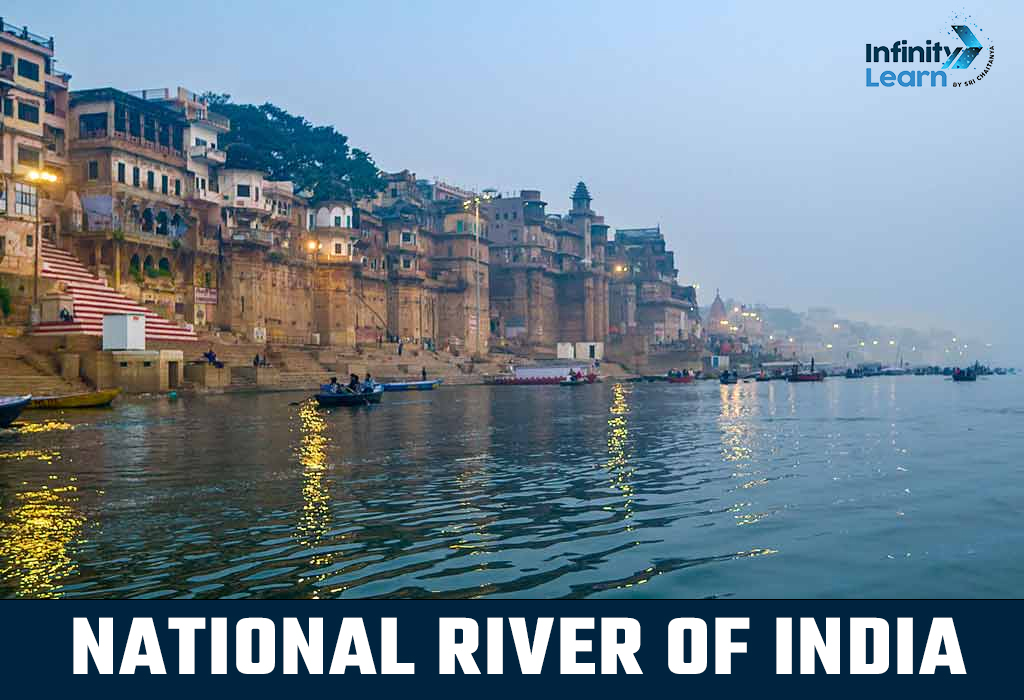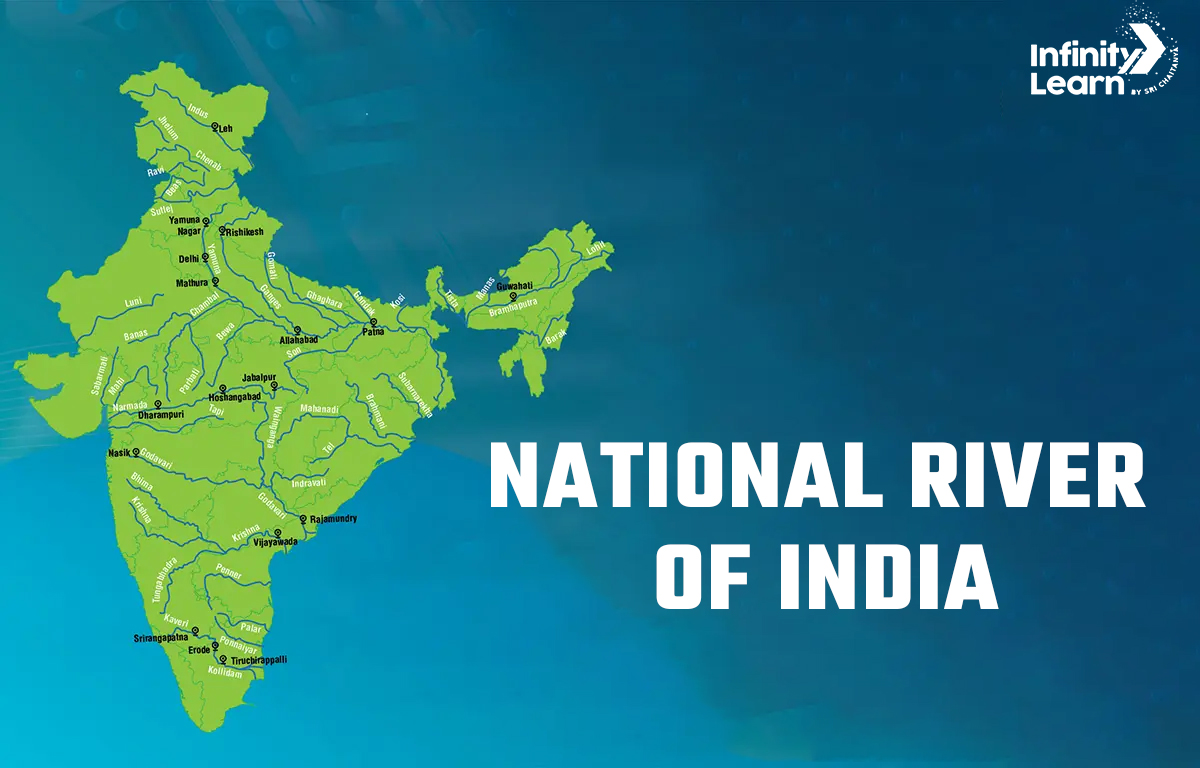Table of Contents
The Ganges, commonly known as the Ganga, is considered the national river of India. It is one of the most revered and significant rivers in the country, playing a crucial role in the cultural, religious, and economic aspects of Indian life. The Ganges holds sacred status in Hinduism, and its waters are believed to have purifying qualities. It originates from the Gangotri Glacier in the Indian state of Uttarakhand and flows southeast through northern India, covering states such as Uttarakhand, Uttar Pradesh, Bihar, and West Bengal, before emptying into the Bay of Bengal.

The Ganges River is associated with several pilgrimage sites, including Haridwar and Varanasi, and its basin is densely populated, supporting agriculture and livelihoods for millions of people. Despite its cultural significance, the Ganges faces environmental challenges, including pollution and over-extraction, prompting conservation efforts to protect and restore its ecological health.
The Ganges River ecosystem supports a diversity of flora and fauna, making it an essential aspect of India’s ecological system. It is the lifeline of millions of people living in the region, providing them with water, food, and economic benefits.
Considering the Ganges River’s cultural, historical, spiritual, and ecological importance, the Indian government declared the Ganga River as the National River of India in 2008. The declaration aimed to promote the river’s conservation and protection while ensuring sustainable development in the region.
Before 2008, there was no national river of India officially designated by the government. However, some rivers were considered culturally significant and revered among the people of India, such as the Ganges, Yamuna, and Brahmaputra.
About Ganga River
- The Ganges holds cultural, religious, and historical significance in India. It is considered sacred in Hinduism and plays a vital role in the country’s traditions, rituals, and daily life. The Ganga River is believed to have purifying powers that can cleanse sins .
Many people travel from across the country to take a ritualistic bath in the river. - The Ganges River is mentioned in Indian literature. The Ganges holds a prominent place in Indian literature, poetry, and mythology. It is often depicted as a symbol of the eternal and the divine in various texts.
- The river is also a popular destination for religious ceremonies and rituals, with millions of people visiting its banks every year to perform puja and take a dip in its holy waters.
- The river is approximately 2,525 km long and flows from the Himalayas through northern India, before emptying into the Bay of Bengal. The Ganga River delta is the largest in the world, covering an area of 59,000 km². The river is home to over 140 species of fish and it has been a part of the National Symbols of India.
- The Ganges River contributes to agriculture in India. The Ganges and its tributaries provide water for agriculture, supporting the livelihoods of millions of people in the Gangetic plains.
- There are several major cities located along the banks of the Ganga River which includes Rishikesh, Haridwar, Kanpur, Allahabad, Varanasi, and Kolkata.
- It’s very important to know about the course of the Ganga River. The Ganga flows southeast through northern India, covering states such as Uttarakhand, Uttar Pradesh, Bihar, and West Bengal, before emptying into the Bay of Bengal.
- It is believed to be the epitome of purity and is worshipped, revered, and considered holy by millions of people.
Why Ganga Is The National River Of India?
The Ganges River is considered the National River of India. The Ganga is considered holy in Hinduism due to its association with various myths and legends. Bathing in the Ganges is believed to purify the soul, and the river is considered the embodiment of the goddess Ganga. While the Ganga holds immense religious significance in Hinduism, it is also a vital part of India’s cultural, social, and ecological fabric. Efforts to protect and clean the Ganga are ongoing to preserve its sanctity and maintain its ecological balance.
Also Read Related Articles:
| National Symbols of India | National Flag of India |
| National Emblem of India | National Anthem of India |
| National Bird of India | National Flower of India |
Origin and Significance of the National River of India
The Ganga, or Ganges River, is considered holy and sacred in Hinduism for several reasons:
Spiritual Significance: The Ganga is believed to be a divine goddess, Ganga Mata or Mother Ganges, in Hinduism. It is worshipped as a deity and is considered to be a source of spiritual purity.
Mythological Connections: According to Hindu mythology, the Ganga is said to have originated from the matted hair of Lord Shiva. The descent of the Ganga to Earth is a significant event in the mythological narrative.
Purification: Bathing in the Ganga is believed to purify oneself of sins and help attain moksha (liberation from the cycle of rebirth). Many Hindus consider taking a dip in the Ganga, especially during auspicious occasions or pilgrimages, as a means of spiritual cleansing.
Connection to Hindu Rituals: The water of the Ganga is often used in Hindu rituals, ceremonies, and rites. It is considered auspicious and is believed to enhance the sanctity of religious practices.
Cultural Heritage: The Ganga has played a central role in the cultural and historical heritage of India. Many ancient cities and sacred sites are located along its banks, further enhancing its significance.
Ecological Importance: The Ganga sustains a rich biodiversity and provides water for agricultural activities. Its role in supporting life and ecosystems adds to its reverence.
Symbol of Purity: The Ganga is often referred to as the “purest of the pure.” Its waters are believed to possess purifying qualities, and many people collect Ganga water to use in rituals or to keep at home.
Historical Pilgrimage Sites: Various cities along the Ganga, such as Varanasi and Haridwar, are considered sacred pilgrimage sites. Millions of people visit these locations to perform religious ceremonies and rituals.
National River of India Map

Key Takeaways from National River of India Ganga
● The Ganga faces environmental challenges such as pollution, over-extraction of water, and industrial discharge. Efforts are underway to address these issues and conserve the river’s ecological health.
● There are ongoing conservation initiatives for the Ganges River. Several initiatives, including the Swachh Bharat Abhiyan (Namami Gange project), have been launched to address pollution, improve water quality, and conserve the Ganges ecosystem.
● The Ganges is also an important source of water for agriculture, industry, and domestic use, and its preservation is crucial for the sustenance of millions of people who depend on it for their livelihood.
● In 2008, the Indian government declared the Ganga River as the National River of India.
● The river has religious significance for Hindus and is worshipped as a goddess. The river Ganga is said to flow from the feet of Lord Vishnu, the Preserver, and is considered to be the embodiment of the goddess Ganga.
● The Kumbh Mela ( Annual Pilgrimage ),one of the largest religious gatherings in the world, takes place along the banks of the Ganges. Pilgrims gather to bathe in the river during this auspicious event.
● The Ganga originates from the Gangotri Glacier in the Indian state of Uttarakhand. The glacier is a significant source of freshwater for the river.
● The World Bank is supporting the Government of India in its effort to rejuvenate the Ganga River.
National Mission for Clean Ganga
The National Mission for Clean Ganga (NMCG) is a significant initiative by the Government of India aimed at restoring and rejuvenating the Ganga river, one of the most revered and vital water bodies in the country. This mission focuses on comprehensive planning and execution of various projects and initiatives to reduce pollution, conserve the river’s ecological balance, and promote sustainable use of its resources. NMCG operates under the Ministry of Jal Shakti and collaborates with various stakeholders, including state governments, local bodies, and NGOs, to ensure a holistic approach toward the cleaning and conservation of the Ganga, aiming for a cleaner and healthier river ecosystem for generations to come.
National River Of India – Frequently Asked Questions (FAQs)
Which is the national river of India?
The national river of India is Ganges, also known as the Ganga.
Why is Ganga a holy river?
The Ganges River is considered to be a sacred and important river in India for its religious, cultural, historical and ecological significance.
What is the importance of the Ganga River in Indian culture?
The Ganga is central to Indian culture, featuring in religious ceremonies, festivals, and rituals. It is also a symbol of purity, life, and spirituality.
Where does the Ganges River originate?
The Ganga River originates from the Gangotri Glacier in the Indian state of Uttarakhand.
What are the major threats to India's national rivers?
Pollution, encroachment, overuse, and climate change pose significant threats to the health of India's rivers.
Are all major Indian rivers in the same geographical region?
No, India has rivers originating from both the Himalayas and the Peninsular region, each with its unique characteristics.








